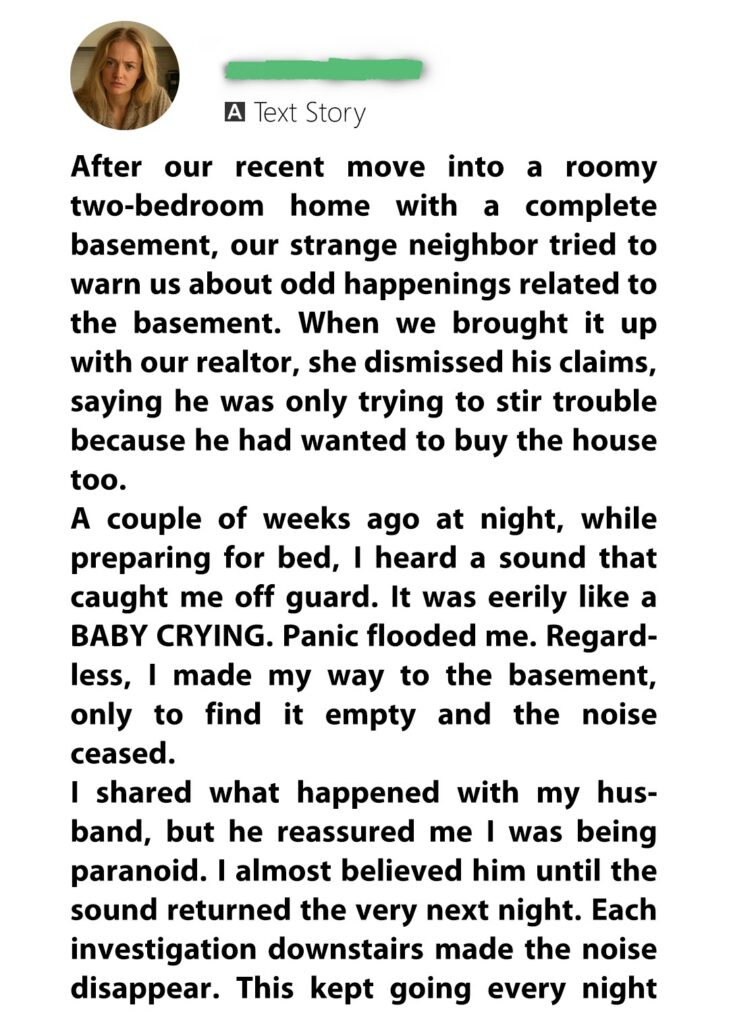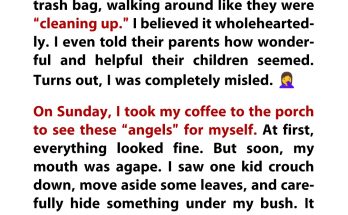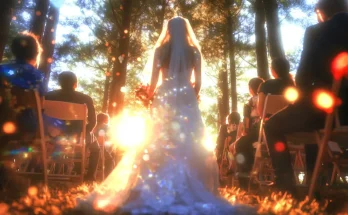When Sarah and her husband moved into their century-old home, they were chasing a fresh start. The house was charming, if a bit worn, and the basement—cold, musty, and seemingly empty—was the last place she expected to find mystery. But on their third night, a sound pierced the silence: a baby crying. Faint, muffled, and unmistakably coming from inside the basement wall.
At first, Sarah thought she was imagining it. But the cries returned, always at night, always from the same spot. Her husband dismissed it as old pipes or wind, but Sarah’s instincts screamed otherwise. She began investigating, tapping the walls, listening closely. One section sounded hollow. With trembling hands, she pried away the paneling—and behind it, she found a hidden crawlspace.
Inside was a small, dust-covered cradle. No baby. Just a faded photograph of a woman holding an infant, and a diary wrapped in cloth. The entries revealed a tragic story: decades ago, a young mother named Evelyn had lived there. Her child, born out of wedlock, had been hidden from the world. The baby died of illness, and Evelyn, consumed by grief and shame, sealed the cradle away—along with her sorrow.
Sarah was shaken. The cries hadn’t been supernatural, but emotional echoes—her own subconscious responding to the house’s buried grief. She held a quiet memorial, placing flowers in the crawlspace and reading Evelyn’s final diary entry aloud. That night, the crying stopped.
The experience changed Sarah. She no longer saw the house as just bricks and beams, but as a vessel of memory. She began volunteering at a local shelter for single mothers, honoring Evelyn’s story by helping others rewrite theirs.



